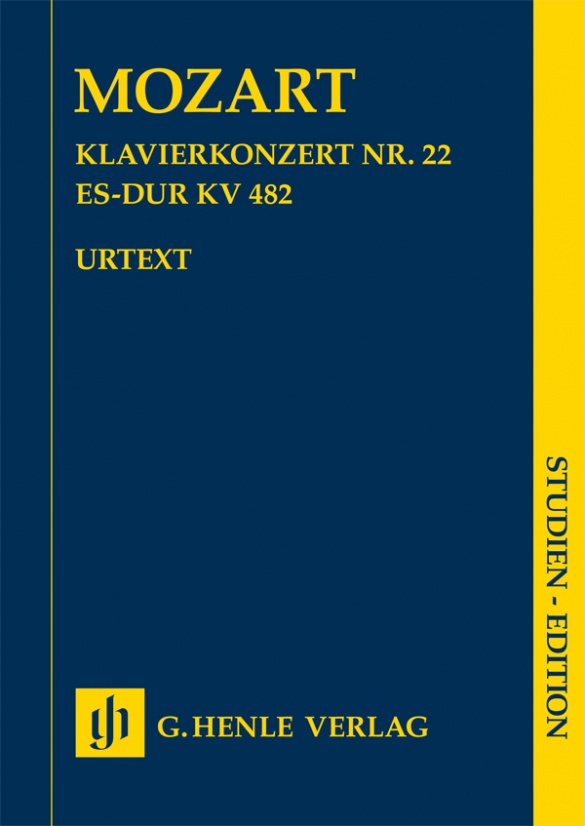Haydn: Sinfonie G-Dur, Hob. I:88
Edited by Andreas Friesenhagen (originally 2010, in Joseph Haydn Werke I:14)
VI+52pp, HN 9056, ISMN 979-0-2018-9056-2
Buy it HERE
Haydn: Sinfonie F-Dur, Hob. I:89
Edited by Andreas Friesenhagen (originally 2010, in Joseph Haydn Werke I:14)
[VI]+46pp, HN 9057, ISMN 979-0-2018-9057-9
Buy it HERE
Mozart: Klavierkonzert Nr. 22 Es-Dur, KV 482
Edited by Cliff Eisen (preface dated “Autumn 2018”)
VIII+91pp, HN 7240, ISMN 979-0-2018-7240-7
Buy it HERE
If there is one thing you can rely on with G. Henle Verlag it is quality, both in terms of the fine presentation and of the contents. These three additions to the catalogue (the first two as off-prints from the full-sized complete edition) contain the introductions in three languages (German, English and French) and the commentary in the first two. Despite (obviously) being much smaller than their library shelves cousins, they retain the clarity of print that makes both a pleasure to use.
I confess myself to have been ignorant of these two Haydn symphonies. My eye was caught by the editor’s note that while “solo” meant “you have the tune” in the second movement Largo, in the trio section of the following movement it meant “only one player”. Clearly I wasn’t alone in being slightly confused by this apparent lack of logic (since all the parts were copied by the same person, and – since the original score is lost – the fact that Haydn had made corrections to them, they are given the authority of Primary Source); in a recording I listened to online, in fact, the cello part in the Largo *was* played as a solo. I do like the fact that Haydn only introduces the trumpets and timps in that same second movement – he liked keeping listeners on their toes!
Following the score as I listened to Malcolm Bilson play the Mozart concerto reminded me of my days as a student, when we were encouraged to do so as part of classes in orchestration – no matter how good one’s ears are, there are always details than one misses without having access to the notes. It also rather reminded me that my regular listening has become a little too narrow – my ears need to get out more! So that’s another reason to thank Henle for producing such attractive and conventiently sized scores. I have only praise for them.
Brian Clark
